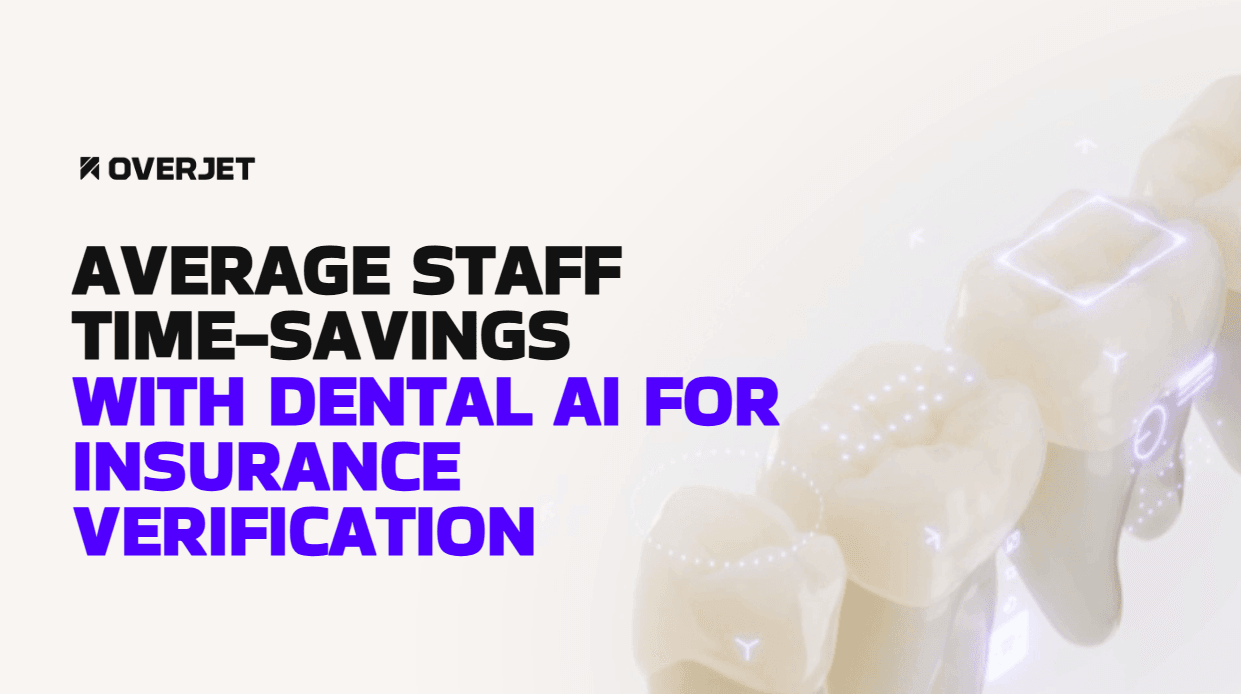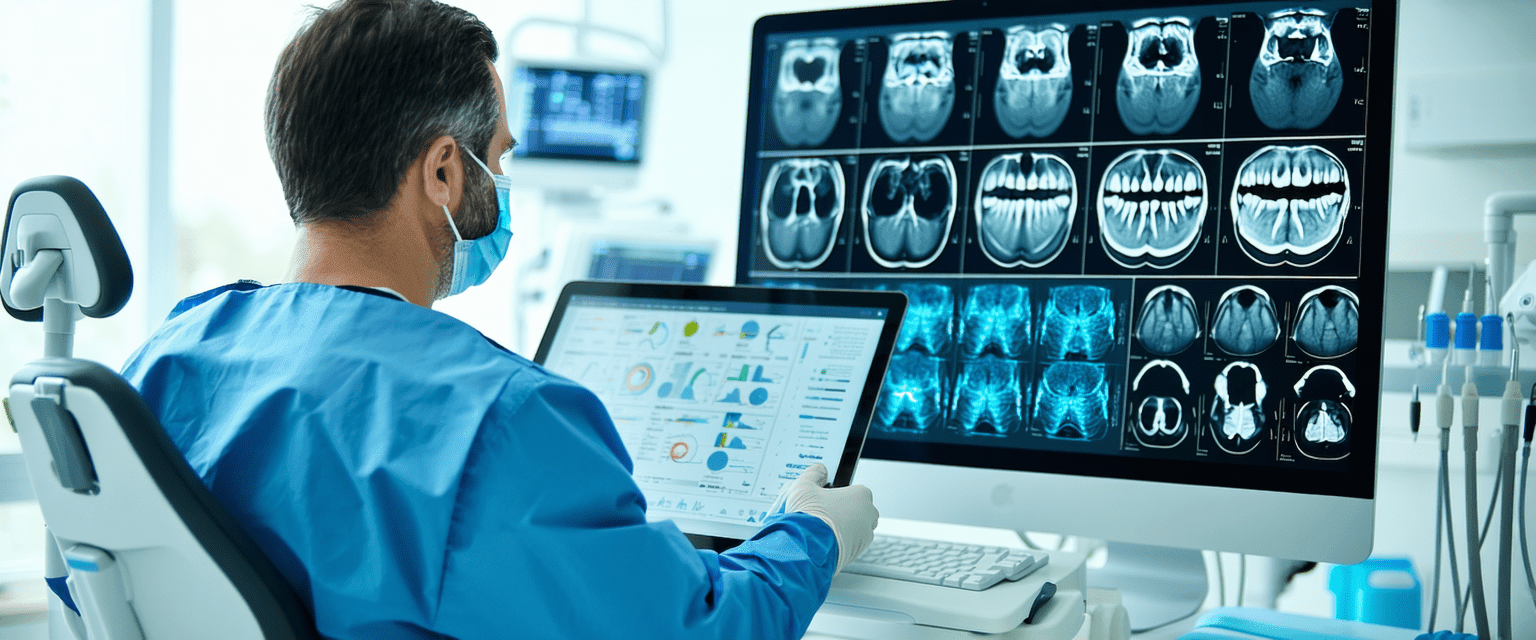In today’s patient-centric dental world, clear and effective communication isn’t just a nice-to-have—it’s critical for delivering high-quality care and building lasting relationships. Every touchpoint influences how patients perceive your practice, from their first interaction to post-treatment follow-ups.
Yet, many dental teams struggle to keep up with growing communication demands.
Challenges often include:
Missed calls and delayed responses that frustrate patients
Inconsistent messaging across channels like phone, email, and text
Staff are overwhelmed by repetitive tasks that take time away from patient care
This is where artificial intelligence (AI) is transforming the game.
AI-powered tools are reshaping dental patient communication by making it:
Faster – Automated systems reply instantly to common questions and appointment requests
More personalized – AI tailors reminders, educational content, and follow-ups based on individual patient needs
Consistent – Messages remain accurate and professional, regardless of timing or staff availability
With AI, dental practices can engage patients meaningfully at every stage of their journey:
Initial contact: AI chatbots handle inquiries 24/7
Appointment booking: AI-driven tools streamline scheduling and reminders
Post-visit follow-up: Personalized messages and surveys enhance care
By integrating AI into communication workflows, dental teams not only save time but also deliver a smoother, more satisfying patient experience, strengthening trust and boosting retention.
Explore Overjet's Dental AI Software
What Is Dental Patient Communication?
Dental patient communication refers to all the ways a dental practice interacts with its patients throughout the entire care journey. From the first point of contact to ongoing engagement after treatment, these interactions play a vital role in shaping the patient experience and building trust.
Key touchpoints in dental patient communication include:
Appointment requests and confirmations — Making it easy for patients to schedule and secure their visits.
Educational messaging before procedures — Helping patients understand what to expect and how to prepare.
In-office verbal communication — Ensuring patients feel heard, respected, and reassured during their visit.
Post-treatment follow-ups — Providing care instructions, checking on recovery, and addressing any concerns.
Recall reminders and re-care campaigns — Keeping patients engaged with ongoing oral health maintenance.
Effective communication at each of these stages helps reduce anxiety, improve case acceptance, and encourage long-term loyalty. When patients feel informed and supported, they’re more likely to follow treatment plans and return for future care.
However, many practices face challenges in maintaining strong communication.
Common obstacles include:
Staff overload — Team members juggling multiple tasks often struggle to respond promptly.
Manual processes — Reliance on outdated systems leads to inefficiencies and errors.
Time constraints — Busy schedules can result in missed opportunities to engage patients meaningfully.
This is why modern practices are increasingly turning to technology, like AI, to bridge these gaps and enhance patient communication at every step.
How AI Is Revolutionizing Dental Communication
Artificial intelligence (AI) is transforming how dental practices communicate with patients. Unlike simple automation that relies on preset rules, AI leverages advanced technologies such as machine learning, natural language processing (NLP), and predictive analytics. These tools enable dental teams to not only automate tasks but also understand, anticipate, and respond to patient needs in smarter, more personalized ways.
What sets AI apart is its ability to learn and adapt over time. As AI systems gather data from patient interactions—whether through chatbots, appointment systems, or feedback surveys—they can refine communication strategies to:
Predict patient preferences and deliver messages at the right time through the right channel.
Adjust tone and content based on patient behavior, history, and feedback.
Streamline repetitive tasks like appointment reminders, so staff can focus on personal interactions.
Importantly, AI doesn’t replace the human connection that’s so critical in dentistry. Instead, it enhances the human touch by supporting dental teams with tools that help deliver:
Faster responses to patient inquiries.
Consistent messaging that aligns with the practice’s standards.
Tailored communication that feels personal, not generic.
By integrating AI, practices can scale their communication efforts without sacrificing empathy or quality. The result is a more engaging, satisfying patient experience that strengthens trust and improves long-term relationships.
AI in Action: Enhancing Communication Across the Patient Journey
AI strengthens patient communication at every stage of the dental experience, ensuring patients feel informed, supported, and engaged.
First Contact & Awareness
Most patients begin their journey online. AI-powered chatbots and voice assistants help practices connect with prospective patients 24/7.
Chatbots provide instant answers about services, insurance, and office hours.
Voice AI handles calls after hours or during busy times, capturing voicemails and prioritizing urgent concerns.
Lead Scoring AI identifies high-intent patients and routes them for prompt follow-up.
Appointment Booking & Confirmation
AI eliminates back-and-forth scheduling, making it easier for patients to book and keep appointments.
Smart scheduling assistants offer real-time online booking based on availability.
Automated reminders via text, email, or voice reduce no-shows.
Two-way texting uses AI to detect intent and suggest reschedules or confirmations.
Pre-Visit Education & Consent
AI helps patients feel prepared before arriving.
Personalized content (videos, FAQs) tailored to procedures.
AI-powered consent forms offer interactive, easy-to-understand explanations.
Multilingual tools break down language barriers.
In-Office Communication
AI enhances the chairside experience.
Real-time staff prompts suggest talking points or reminders.
Automated kiosks speed up intake and paperwork.
Sentiment detection gauges anxiety and supports compassionate care.
Post-Treatment & Retention
AI ensures follow-through and long-term loyalty.
Tailored post-op instructions are sent automatically.
Surveys and check-ins flag concerns and prompt outreach.
Predictive analytics identifies patients needing re-care or at risk of attrition.
By integrating AI at each step, practices can create seamless, patient-friendly communication that drives satisfaction and retention.
Benefits of Using AI in Dental Communication
Integrating AI into dental patient communication offers significant advantages for both practices and patients. By enhancing how practices engage with patients, AI helps create smoother, more positive experiences at every stage of care.
Faster, More Reliable Interactions
AI-powered tools provide instant responses to inquiries, appointment requests, and follow-ups. This reduces patient frustration, builds trust, and ensures no question goes unanswered—even after hours.
Consistency and Accuracy
AI eliminates the risk of human error that can occur during busy times or with manual processes. Patients receive clear, accurate messages that reflect the practice’s standards every time, whether it’s a reminder, follow-up, or educational content.
Enhanced Personalization
AI systems can learn from patient behavior and preferences. This allows practices to deliver customized communication, such as sending reminders at the right time, sharing procedure-specific information, or using the patient’s preferred communication channel (text, email, or voice).
Improved Staff Efficiency
By automating repetitive administrative tasks, AI frees up dental team members to focus on what matters most: delivering high-quality, compassionate, in-person care. Staff can spend more time building patient relationships and less time on routine communications.
Better Patient Satisfaction
When communication is prompt, consistent, and tailored, patients feel valued and supported. This leads to higher satisfaction, improved case acceptance, and greater long-term loyalty to the practice.
AI helps dental teams deliver communication that is not just faster, but smarter, friendlier, and more effective.
Overcoming Challenges to AI Adoption
While the benefits of AI in dental communication are compelling, some practices hesitate to implement these tools due to a few common concerns. The good news? These challenges can be addressed with the right approach and planning.
Data Security Concerns
Protecting patient data is a top priority, and rightly so. Dental practices must ensure that any AI solution they choose is fully HIPAA-compliant and follows strict privacy standards. Look for vendors that offer:
End-to-end encryption for all data storage and transfers
Secure authentication processes
Transparent privacy policies that outline how data is used and protected
These safeguards ensure that patient information stays confidential and secure.
Learning Curve
It’s natural to worry about how new technology might impact daily operations. However, most modern AI platforms are designed to be user-friendly and intuitive. Many vendors provide:
Step-by-step onboarding assistance
Training resources like tutorials, webinars, and dedicated support
Customizable features that align with existing workflows
This helps teams adopt AI without disrupting patient care.
Cost Considerations
AI tools come in a range of price points, making them accessible for practices of all sizes. Although there may be upfront costs, the return on investment often comes quickly through:
Time savings on administrative tasks
Reduced no-shows and cancellations
Increased patient retention and satisfaction
By addressing these concerns, practices can confidently embrace AI and unlock its full potential.
The Future of AI in Dental Communication
AI technology is advancing at a rapid pace, and dental communication is set to benefit from exciting innovations that will further transform patient interactions. As patient expectations for personalized, seamless communication continue to rise, forward-thinking practices that embrace these advancements will be better positioned to deliver outstanding care.
Here’s what the future of AI in dental communication may look like:
Conversational AI with emotional intelligence: Emerging AI systems will not only understand what patients say, but also detect mood and emotion. This will allow practices to adjust messaging and tone in real time, helping nervous patients feel more at ease and ensuring that communication feels compassionate and human.
Fully automated, AI-orchestrated communication pipelines: Practices will be able to set up end-to-end AI workflows that manage communication across the entire patient journey—from initial inquiry to follow-up and ongoing care—without gaps or delays.
Deeper integration with EHRs and practice management systems (PMS): Future AI tools will connect seamlessly with existing software, making it easier to access patient records, tailor communication, and keep data synchronized across platforms.
By staying ahead of these trends, dental practices can enhance efficiency, improve patient satisfaction, and build stronger, longer-lasting relationships. The future of dental communication is smart, connected, and deeply patient-centered—and AI is at the heart of that transformation.
Ready to See Overjet's Dental AI in Action?
FAQs: AI for Dental Patient Communication
How does AI improve communication between dentists and patients?
AI improves communication by making interactions faster, more consistent, and personalized. From 24/7 chatbots that answer common questions to AI-driven reminders that reduce no-shows, these tools ensure patients get timely, accurate information at every stage of care.
Is AI in dental patient communication safe and HIPAA-compliant?
Yes. Leading AI solutions for dental practices are designed with data privacy and security in mind. They follow HIPAA guidelines, use encryption, and provide secure storage and transfer of patient information. It’s important to choose AI vendors who prioritize compliance and transparency.
Can AI replace human communication in a dental practice?
No—AI is designed to enhance, not replace, human communication. While AI can handle routine tasks like appointment scheduling or sending reminders, it frees up dental teams to focus on building meaningful in-person connections and delivering compassionate care.
What types of AI tools are most useful for dental communication?
Popular AI tools include:
Chatbots for answering FAQs and collecting patient info
AI-driven appointment booking and reminders
Sentiment analysis tools for patient feedback
Predictive analytics for patient retention campaigns
Automated post-op instruction systems
How can AI help reduce no-shows and cancellations?
AI reduces no-shows by sending smart, personalized reminders and confirmations via the channels patients prefer (text, email, or voice). Some AI systems detect non-responses and automatically follow up or suggest reschedule options, improving appointment adherence.
Is AI affordable for small and mid-sized dental practices?
Yes. Many AI tools offer scalable solutions suitable for practices of all sizes. The cost is often offset by increased efficiency, reduced administrative workload, and higher patient retention rates, leading to a positive return on investment.
What’s the future of AI in dental patient communication?
The future includes conversational AI with emotional intelligence, deeper integration with practice management software, and more advanced predictive communication that anticipates patient needs before they arise.









